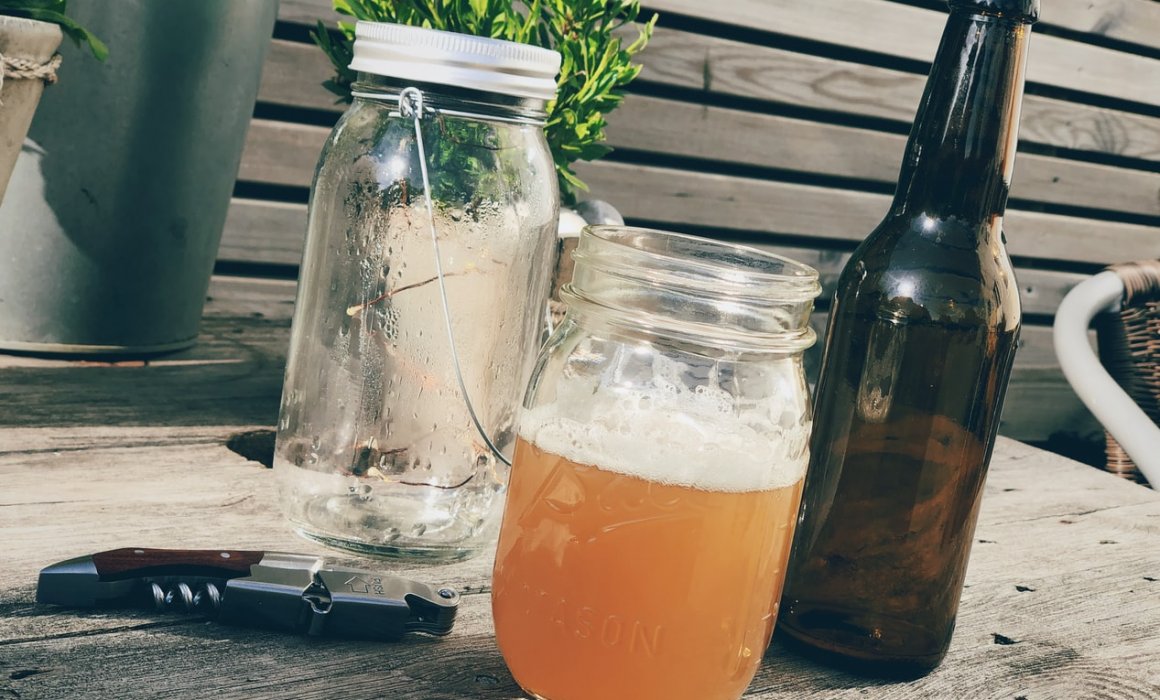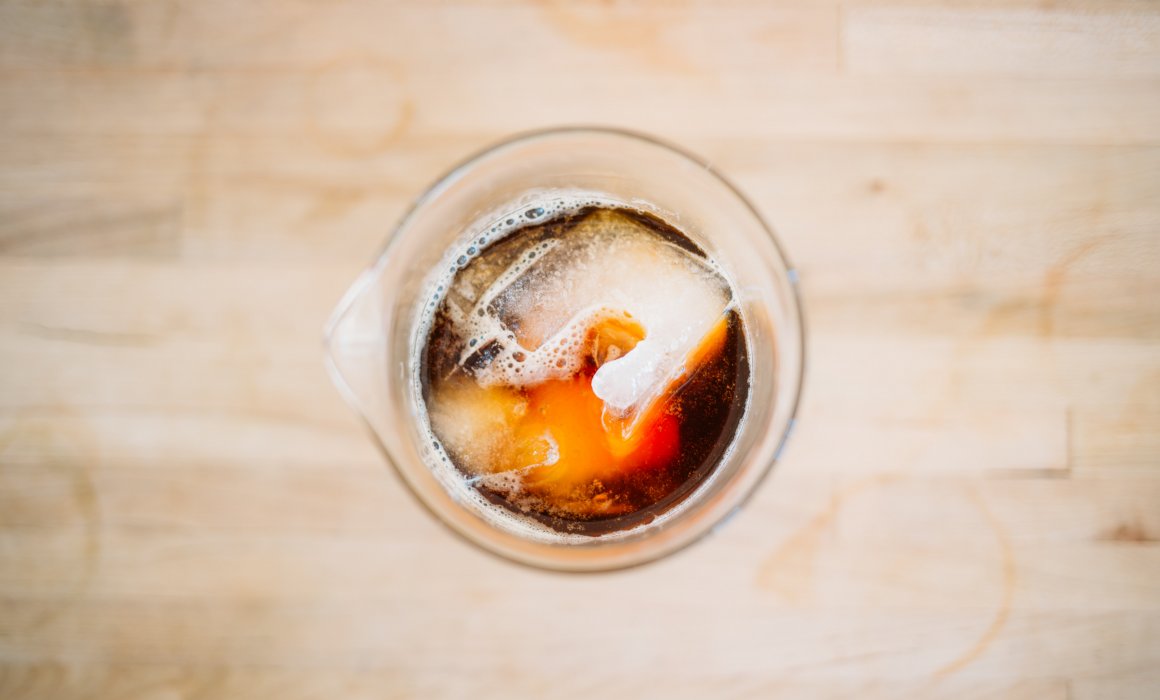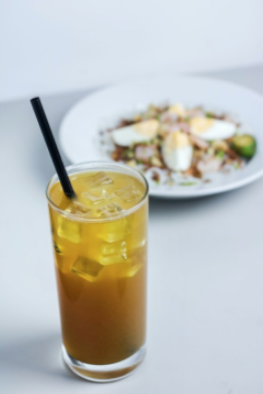Everything You Should Know About Pasteurization and Kombucha Tea
If you saw the title of the article and thought, “isn’t it spelled kambucha?” you’re not suffering Mandal Effect, you’re just not region locked. The brewed, fermented tea beverage has been around for over a thousand years and has slipped through many countries. The name (and therefore spelling) mutated a few times as it circled the planet.
What makes kombucha exciting is the range of chemical and microbial properties at work in its creation. Homebrewers and micro-brewers alike discover new flavors and textures with nearly every batch. If you’ve ever been fascinated by the alchemy of the ancient world, kombucha making puts you in that realm.
Regardless of your specific goal or what you think is going on inside the bottle, health and safety are important. For a fermented beverage like kombucha, it’s challenging to know how much fermentation covers bacterial inhibition and how much pasteurization may be needed to ensure safety.
If these questions are puzzling as you stew over your pot of flavors, this guide can help.
Properties and Traits of Kombucha
Kombucha owes it origins to China but is named after a Korean doctor who delivered it to Japan.
It’s probiotic and microbial qualities have been known, but not well understood since the 60’s when Swiss researches looked into Kombucha and yogurt.
Kombucha itself is fermented from a SCOBY (symbiotic culture of bacteria and yeast). Many such SCOBYs exist and each brings with it a different heritage not unlike sourdough mother doughs.
Fermentation
Fermentation occurs when sugar and yeast get together and create an excess of carbon dioxide and ethanols. The acidic nature of carbon dioxide inhibits bacterial growth. As we all know, alcohol also has anti-microbial properties.
Fermentation has been used for thousands of years to make liquids potable and safer for consumption. It’s why one of the earliest civilizations, the Egyptians, are well known for creating heqet (beer).
Kombucha, specifically, undergoes aerobic fermentation. The fermentation process also creates acetic acid and acetaldehyde. In simple terms, the fermentation process may leave the final brew safe to consume. In reality, variations in the ingredients, temperature, fermentation time, and storage all influence the final product.
If that final product arrives at a pH of <4.6 then it will kill off enough harmful bacteria. However, at the start, most SCOBY and flavor ingredients produce a mixture of pH 5 or greater. To meet food safety guidelines you need a pH of 4.2.
Pasteurization
The process of pasteurization aims to heat a consumable substance hot enough to kill off 99% of the harmful bacteria but not chemically transform the substance itself.
Pasteurization can’t be a target process. It doesn’t have a list of ‘good’ bacteria that it keeps safe from ‘bad’ bacteria.
That said, not all bacteria and microbes possess the same traits. Some are heartier than others and this key difference separates the range of pasteurization techniques. When you employ a pasteurizer like the Slim/Line model from PRO for processing beverages, you want the product to be safe, stable, and tasty.
You certainly don’t want to destroy the beverage alchemy you’ve created in your kombucha.
Low Pasteurization
The first tier of pasteurization methods in the U.S. used even lower temps than today’s low-temperature methods.
The products are held at the lower temperature for longer. The principle behind the technique relies on the stress of the heat to kill off the bacteria while leaving the heartier beverage ingredients chemically unaltered.
Low-temp heating is done for thirty minutes.
High Pasteurization
High pasteurization techniques aim for higher temps but for a lower period of time. This kills the bacteria, which tend to be more fragile than surrounding ingredients, and then cools down the beverage quickly to avoid forcing other chemical changes.
These include:
- Higher Heat Shorter Time (HHST) 161 F for 15 seconds, then cooled
- Ultra-Pasteurized (UP) 280 F for 2 seconds
- Ultra-High Temperature (UHT) 275-300 F for 2 seconds
The first one (HHST) is associated with many refrigerated products mass-produced today. The latter two are used to pasteurize shelf-stable products that require little to no refrigeration before opening.
Bacteria Benefits
Clearly, pasteurization makes for a safer beverage that also enjoys a longer shelf life. Two things most people would love to get as long as it came at no trade-off.
With kombucha tea, there is a trade-off in the amount of ‘good’ bacteria that gets to remain and the ‘bad’ bacteria that need to go.
This is where things get both tricky to parse out and some ideologies start to clash. Kombucha, hailing as it does from a China of the past, gets wrapped up in the ideas of traditional Chinese medicine (TCM). This ‘everything natural is healthy’ approach starts to fall into confirmation bias.
There are numerous studies that indicate that many of the compounds, bacteria, and acids in kombucha have beneficial effects. Some studies even point out that some compounds in Kombucha are themselves antimicrobial. The beverage actually inhibits the growth of harmful bacteria while sitting in the bottle.
Kombucha contains many benefits, no argument there, the argument is what are the benefits and what are their levels. It’s a problem shared by many robust compounds. Lots of things going on means lots of variables to account for.
Bacteria Risks
What can be agreed on is that harmful bacteria such as salmonella, listeriosis, and brucellosis (to name a few) must be eliminated for the health of consumers.
Additionally, without a secondary process to halt fermentation, carbon dioxide continues to build and makes canned and bottled fermented products into physical hazards.
Tight controls need to be maintained for fermented beverages like kombucha to prevent toxic acidosis levels. Lowering excess alcohol, through decreased fermentation, to keep it under the <1% limit, is another reason to engage in kombucha pasteurization.
Safety and Tasty
In the end, when crafting and selling a beverage, you want it to be the best it can be. For kombucha, there is a tightrope to be walked between benefits.
Summary
Point 1 – Traditional kombucha is not pasteurized, which opens up risk for bacterial growth and other inconsistencies and quality concerns in the supply chain.
Point 2 – You can achieve a stable kombucha product through pasteurization, which eliminates most of the above risks.
Point 3 – However, pasteurization will also kill the ‘good’ bacteria in kombucha, also known as probiotics. This means a kombucha producer who is operating a pasteurizer will also need to introduce shelf-stable probiotics as an additional ingredient in the kombucha.
Point 4 – While this will lead to a non-traditional kombucha, the benefits of a shelf-stable product are plentiful and retailers and customers alike are seeking this form of kombucha.
If you have more questions or comments about pasteurization techniques and technology, contact us.

ABOUT US:
PRO Engineering and Manufacturing was established in 1977 by Ed and Dave Michalski as a steel fabrication shop. For more than 40 years, PRO Engineering and Manufacturing, Inc. has been delivering solutions for beverage product shelf stability and consumption safety. As leading innovators in post-fill pasteurization, our skilled team offers the best in high-quality pasteurization equipment.
CONTACT US:
Phone: 414-362-1500 | Email: [email protected]



